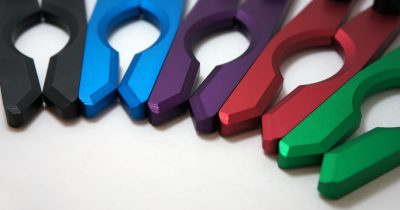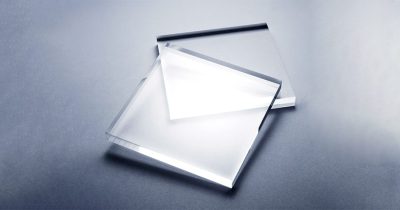Types of Fits: How to Choose the Right Fit in Engineering
INTRODUCTION
In engineering and manufacturing, selecting the right fit between mating parts is crucial for ensuring proper function, assembly, and durability. Whether designing shafts and holes, bearings, or fasteners, understanding different types of fits helps achieve the desired performance and ease of assembly.
This guide covers:
- Types of fits in engineering
- Differences between clearance, interference, and transition fits
- How to choose the right fit for your application
What is a Fit in Engineering?
A fit refers to the degree of tightness or looseness between two mating parts, such as a shaft and a hole. It determines how parts will interact—whether they slide freely, require force to assemble, or stay permanently locked together.
Fits are classified into three main types based on the amount of clearance or interference:
- Clearance Fit – Always leaves a gap for free movement.
- Interference Fit – Creates a secure, press-fit connection.
- Transition Fit – Can be either a slight clearance or interference fit
A clearance fit ensures that the shaft is always smaller than the hole, allowing free movement between the two parts.
When to Use a Clearance Fit:
- Bearings and rotating shafts
- Sliding mechanisms (e.g., guide rails)
- Bolted assemblies
Types of Clearance Fits:
| Fit Type | Description | Examples |
| Loose Running Fit (H11/c11, H11/d11) | Large clearance for easy assembly and lubrication | Conveyor rollers, agricultural machinery |
| Free Running Fit (H9/d9, H9/e9) | Moderate clearance for unrestricted movement | Motor shafts, general engineering |
| Close Running Fit (H8/f7) | Minimal clearance for accurate positioning | Precision machinery, gears |
INTERFERENCE FIT
An interference fit (or press fit) occurs when the shaft is slightly larger than the hole, creating a tight, friction-based connection. These fits require force, heating, or cooling to assemble.
When to Use an Interference Fit:
- Permanent or semi-permanent joints
- Gears, pulleys, and bearings
- High-strength applications
Types of Interference Fits:
| Fit Type | Description | Examples |
| Shrink Fit (H7/u6, H7/r6) | Uses temperature differences for assembly (expansion/contraction) | Railroad wheels, high-speed turbines |
| Press Fit (H7/p6, H7/n6) | Requires mechanical force for assembly | Bushings, couplings |
| Heavy Interference Fit (H7/s6) | Very high force needed, often permanent | Aircraft components, heavy machinery |
- Transition Fit
A transition fit sits between clearance and interference fits, meaning the parts may have either a slight clearance or a slight interference depending on tolerances.
When to Use a Transition Fit:
- Precise alignment required
- Dowel pins, bearings, and machine parts
- Applications where light press or sliding fit is acceptable
Types of Transition Fits:
| Fit Type | Description | Examples |
| Push Fit (H7/k6, H7/m6) | Light pressure needed for assembly | Gears on shafts, mechanical couplings |
| Snug Fit (H7/j6, H7/h6) | Small clearance or interference, ensures precise location | Dowel pins, machine guides |
How to Choose the Right Fit in Engineering
Choosing the correct fit depends on:
- Function of the Assembly
- Does the part need to move freely? → Clearance Fit
- Should it be permanently fixed? → Interference Fit
- Need precise alignment but removable? → Transition Fit
- Material Properties
- Metals expand and contract with temperature. Consider thermal expansion when selecting a fit.
- Soft materials (like plastics) may require looser fits to avoid deformation.
- Manufacturing Tolerances
- Precision machining allows tighter tolerances and better control over fits.
- If manufacturing variation is high, use clearance fits to ensure easy assembly.
- Assembly & Maintenance Requirements
- If parts need frequent disassembly, opt for clearance fits.
- If the joint must withstand high loads without slipping, an interference fit is ideal.
- Load and Stress Conditions
- Dynamic loads (rotating shafts, bearings) → Clearance or transition fits
- Static, high-force applications (press-fitted gears, bushings) → Interference fits
Examples of Fit Selection in Real-World Applications
| Application | Recommended Fit | Reason |
| Ball bearings | Clearance Fit | Allows free rotation with minimal friction |
| Automotive crankshaft | Interference Fit | Ensures a secure, high-strength connection |
| Dowel pins in mechanical assembly | Transition Fit | Provides precise alignment but is removable |
| Pipe fittings in high-pressure systems | Interference Fit | Prevents leakage and maintains structural integrity |
| Conveyor rollers | Clearance Fit | Enables smooth, low-friction movement |
Conclusion
Understanding and selecting the right fit is essential for ensuring performance, durability, and ease of assembly in engineering applications. Clearance fits allow movement, interference fits create secure joints, and transition fits balance between the two.By considering function, material properties, tolerances, assembly needs, and load conditions, engineers can choose the perfect fit for their designs.
Need Help Selecting the Right Fit?
Contact us at meviy-usa@misumiusa.com.






